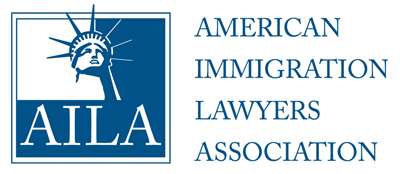Processamento de casos do USCIS: status e perguntas comuns

Este post abordará muitas das perguntas comuns em torno do status dos processos e casos com o USCIS.
Visualização de todos os processos do USCIS
Para iniciantes, todo caso com o USCIS deve ser processado por um oficial do USCIS. É esse oficial que tem controle total sobre um processo, e NÃO:
- um aplicante
- um advogado
- um senador ou congressista
- um membro militar de alto escalão
Além disso, você normalmente não conhece o oficial que está cuidando do seu caso. Nem pode falar diretamente com esse oficial.
Um oficial de imigração é como qualquer outro oficial. Vamos torná-lo mais comum. Você já teve algo roubado? Se não, vamos fingir que seu telefone foi roubado em um Walmart, retirado diretamente do seu carrinho de compras.
Um detetive contaria com um relatório policial, imagens de segurança, fotos, testemunhos, etc. O detetive deve trabalhar com várias pessoas para resolver o crime. O detetive não pode dar um tempo estimado em que (1) o criminoso será preso, (2) quando o telefone lhe será devolvido e (3) quando a investigação será concluída. O detetive termina a investigação “quando ela terminar”.
O mesmo ocorre com um oficial do USCIS, o oficial de imigração recebe “documentos, formulários, provas”, mas depois deve coordenar com outros oficiais, outras agências, vários sistemas e conduzir uma investigação.
Nota: As investigações não podem ser apressadas. Os casos são tratados por ordem de chegada.
O que é a ordem de chegada?
Essa é uma expressão comum para o atraso acumulado. Os casos são processados na ordem em que são recebidos. Um caso não pode ser acelerado (furar fila), a menos que seja caso de vida ou morte ou no melhor interesse do governo.
Pedidos comuns para furar a fila:
- Viagens de membros do serviço militar normalmente não aceleram o processo, porque o membro ainda precisa se apresentar, com ou sem um cônjuge ou membro da família.
- O membro do serviço militar está prestes a se apresentar na Alemanha onde irá morar por 3 anos. O credenciamento de segurança do membro precisa que ele se torne um cidadão dos EUA ou que um membro da família seja um residente permanente legal. Pode haver interesse do governo aqui, pois afeta o trabalho.
- Veterano e Prisioneiro de Guerra, alguém que bravamente serviu aos interesses da nação, faz um pedido final no leito de morte para ver seu membro da família mais uma vez antes de morrer. O interesse do governo é baseado em interesses e serviços passados. Este pedido pode ser acelerado.
Se não for do interesse do governo, não espere que o governo agilize seu processo. Uma solicitação injustificada pode até atrasar seu caso se ele for retirado da fila ou deixado na mesa de um oficial que não é designado a processá-lo.
Informações de contato do USCIS
Existem dois tipos de agentes quando você liga para a Central de Atendimento do USCIS (USCIS Contact Center):
- Representantes de nível 1 que concluem solicitações on-line e fornecem status de caso
- Representantes de nível 2 que são oficiais de imigração nos escritórios locais que podem fornecer melhores explicações para as perguntas, mas não podem processar seu caso (pois essa é a tarefa de outro oficial em algum lugar do país)
Ligar para o USCIS não significa que você possa falar com um oficial de nível 2, essa habilidade é determinada por um representante de nível 1.
Se você estiver nos EUA, ligue para o USCIS pelo número 1-800-375-5283
Se você estiver fora dos EUA, ligue para o USCIS pelo número: 212-620-3418
O Status de Caso Online é a mesma informação que você obteria ao falar com um representante do USCIS. O status do caso pode ser encontrado no link aqui abaixo inserindo o número do recibo (Receipt Number), localizado na seção superior esquerda do aviso de recebimento (Receipt Notice):
Quando você pode se comunicar com um oficial do USCIS?
Você normalmente pode se comunicar com um oficial de imigração ou um representante de nível 2 em 3 situações:
- (Comunicação por escrito/correio) Quando um oficial envia uma notificação por escrito solicitando uma resposta a perguntas ou pedidos
- (Comunicação Pessoal) Durante a entrevista com um Oficial de Imigração
- (Comunicação por escrito/eletronicamente) Fora do tempo normal de processamento, mas através do sistema “E-Request”.
Entrar em contato com o USCIS ajuda no meu caso?
Em suma, não.
Ligar para o USCIS para obter o status do seu caso não ajuda a acelerar o processamento. Ele indicaria apenas as informações fornecidas no status online, que podem ser facilmente visualizadas no link: https://egov.uscis.gov/casestatus/landing.do
As vezes em que você pode falar com um oficial de nível 2 é quando o caso está fora do tempo normal de processamento do USCIS ou há problemas com os correios e um oficial de nível 2 pode ter acesso ao caso ou ao sistema em que o caso está.
Se o USCIS quiser mais evidências ou exigir uma explicação, um Aviso do USCIS chegará por correio e a resposta a sua solicitação também será solicitada por correio.
Os oficiais de imigração estão processando o caso, realizando a verificação de antecedentes e investigando muitos aspectos de um processo. Quando o oficial termina o processo, todos são notificados pelo Aviso do USCIS.
Como eu verifico os tempos de processamento?
Por favor, consulte nossa postagem no blog sobre o assunto: https://www.fickeymartinezlaw.com/immigration/como-verifico-o-tempo-de-processamento-do-uscis/
O que são status de caso comuns:
- Meu caso foi recebido
- Meu caso aceito pelo USCIS Lockbox
- Minha taxa de impressão digital foi recebida
- Meu caso foi atualizado para mostrar que as impressões digitais foram tiradas
- Minha solicitação de evidência adicional foi enviada
- Minha solicitação de evidência adicional foi recebida
- Meu caso está sendo analisado ativamente
- Meu caso está em espera
- Meu caso está pronto para ser agendado para uma entrevista
- Meu caso está agendado para uma entrevista
- Meu caso foi enviado para análise de qualidade com base em uma recomendação de aprovação
- Meu caso foi aprovado
- Meu cartão foi enviado para mim
- Meu cartão foi recolhido pelo serviço postal dos Estados Unidos
- Meu cartão me foi entregue pelos correios
- Meu caso foi enviado ao Departamento de Estado
- Meu certificado de naturalização foi emitido
Com base nos status de casos comuns, é possível ver um padrão ou progressão de um caso, conforme ele é processado pelo sistema USCIS e por muitos oficiais para aprovação ou para entrevista.
Mais explicações sobre o status do caso com o USCIS podem ser encontradas aqui: /immigration/status-de-casos-comuns-do-uscis-uma-explicacao-util/
Mais posts do nosso blog:
Isenção de responsabilidade: este blog é disponibilizado pelo advogado ou editor desse escritório de advocacia apenas para fins educacionais, bem como para fornecer informações gerais e uma compreensão geral da lei, e não para fornecer aconselhamento jurídico específico. Ao usar este site, você entende que não há relacionamento advogado-cliente entre você e o editor do Site / Blog. O Blog não deve ser usado como um substituto para aconselhamento jurídico competente de um advogado profissional licenciado em seu estado.
The post Processamento de casos do USCIS: status e perguntas comuns appeared first on Fickey Martinez Law Firm.












